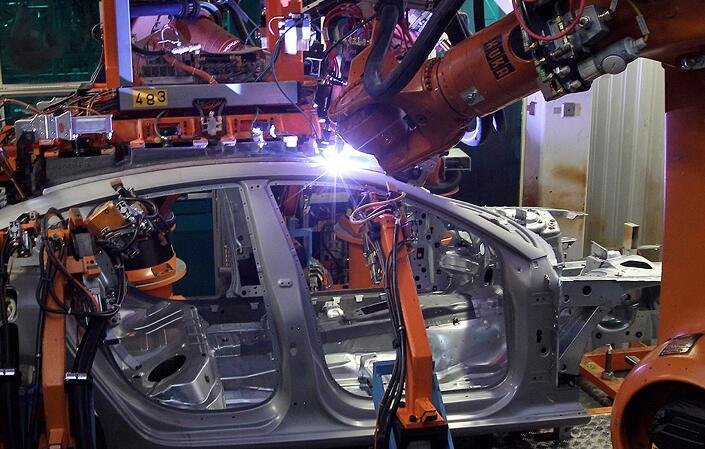The automotive industry is one of the largest adopters of laser welding technology worldwide. With its high energy density, minimal deformation, narrow heat-affected zone, and ability to achieve high-speed, automated production, laser welding has become a key process in modern vehicle manufacturing. As automotive brands push for lightweight designs, improved safety, and enhanced efficiency, advanced welding solutions—such as laser cutting heads, laser welding heads, tube fiber laser cutters, and handheld laser welding machines—are playing an increasingly vital role.
Key Applications of Laser Welding in Automotive Manufacturing
Laser welding is widely applied in various stages of automotive production, especially in high-precision or structurally critical areas where traditional welding methods fall short. Common applications include:
- Roof-to-Side Panel Welding
Laser welding ensures seamless joining between the roof and side panels, improving structural strength, sealing performance, and appearance. - Trunk Lid Welding
Overcomes right-angle lap joint challenges while ensuring strong, clean weld seams. - Door Assembly Welding
Laser tailor welding allows different types and thicknesses of steel to be joined with high accuracy, improving both quality and efficiency. - Battery and EV Component Welding
In electric vehicle (EV) production, laser welding is used for battery modules, sensors, and precision connectors, ensuring reliability and safety. - Remote Laser Welding
Combining robots and galvanometer scanning systems, remote welding significantly reduces positioning time and boosts productivity—already widely adopted in Europe and North America.

Advantages of Laser Welding in the Automotive Sector
- Non-Contact, High-Precision Processing
Unlike mechanical fastening or adhesive bonding, laser welding does not require direct contact with the part, enabling high-precision and clean welds without deformation—ideal for modern multi-material car designs. - Supports Lightweight Vehicle Manufacturing
Continuous laser weld seams can replace multiple spot welds, reducing overlap width, eliminating extra reinforcement parts, and lowering the vehicle’s overall weight. This aligns with global trends toward fuel efficiency and reduced emissions. - Improved Structural Integrity and Accuracy
Laser welding can join metals of different thicknesses, grades, and types with exceptional precision, improving overall body rigidity by more than 30% in some cases, enhancing both safety and durability. - Hybrid Welding for Greater Stability
Combining laser welding with arc welding increases gap-bridging capabilities while maintaining high welding speeds and stability. - Reduced Production Costs and Cycle Time
Laser welding minimizes post-weld processing, shortens assembly cycles, and improves production efficiency, making it a cost-effective choice for automakers.
Market Trends and Future Outlook
The demand for high-precision laser cutting and welding machines is growing rapidly as automakers transition toward electric vehicles, lightweight body structures, and high-efficiency production lines. Three key trends are driving the adoption of laser welding in the automotive sector:
- Lightweight Vehicle Design
Governments and manufacturers worldwide are pushing for lighter vehicles to improve fuel efficiency and reduce emissions. Laser welding enables thinner yet stronger body structures without compromising safety. - Breakthroughs in Domestic Welding Technology
China’s advancements in high-quality, automated laser welding systems have broken foreign monopolies, making cost-effective solutions more accessible to global markets. - Rising Adoption Rates
While laser welding penetration in China’s automotive industry is around 20–25%, it has already exceeded 60% in Europe and North America. With ongoing technology improvements, China is expected to reach similar levels in the coming decade, creating significant growth opportunities.
結論
Laser welding is no longer just an advanced manufacturing option—it is a necessity for modern automotive production. From traditional fuel vehicles to electric cars, the demand for tube fiber laser cutters, laser welding heads, handheld welding systems, and high-precision cutting machines will continue to grow. Manufacturers that invest in advanced laser technology today will be better positioned to deliver safer, lighter, and more efficient vehicles tomorrow.
At Shenzhen Shiguangレーザー, we provide end-to-end solutions for automotive cutting and welding applications, offering world-class equipment from leading brands such as HAN’S FOCUS and OSPRI Laser. Whether you need a fully automated production line or a flexible handheld welding system, our team can deliver the precision and performance your project demands.


